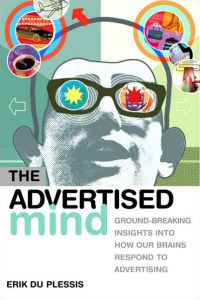Join getAbstract to access the summary!

Join getAbstract to access the summary!
Erik du Plessis
The Advertised Mind
Groundbreaking Insights Into How Our Brains Respond to Advertising
Kogan Page, 2005
What's inside?
Why do some ads work while others don't? How to understand advertising as a mental trigger.
Recommendation
This treatise is designed for patient, methodical readers with a quest for insight. Erik Du Plessis is committed to explaining how advertisements work on consumers' consciousness, so he reviews existing research on advertising, and includes cognitive science's understanding of how the brain works on a chemical and cellular level. His research is accessible, since he often recaps and provides analogies that bring it to life, but some of the material remains dense and even obfuscates key points. Du Plessis' results are accurate but may seem self-defining – such as the idea that ads you like are ads you remember – and they can be difficult to apply. This is an impressive attempt to bring social science and neurological theory to bear on advertising. Given the intangible nature of creativity, a strong intuitive understanding of what makes advertisements likeable might help ad designers get more from this dissection. Of course, the industry also wants to know how it can reach a tech-oriented audience that records its favorite programs on TIVO and fast-forwards through the ads anyway. getAbstract finds that this innovative book may be most useful for professionals in areas that involve a quantifiable, systematic approach, such as methods for determining how many ads to buy and how to allocate them across television outlets and other media.
Summary
About the Author
Erik du Plessis heads a marketing research and brand consulting firm in South Africa.












Comment on this summary